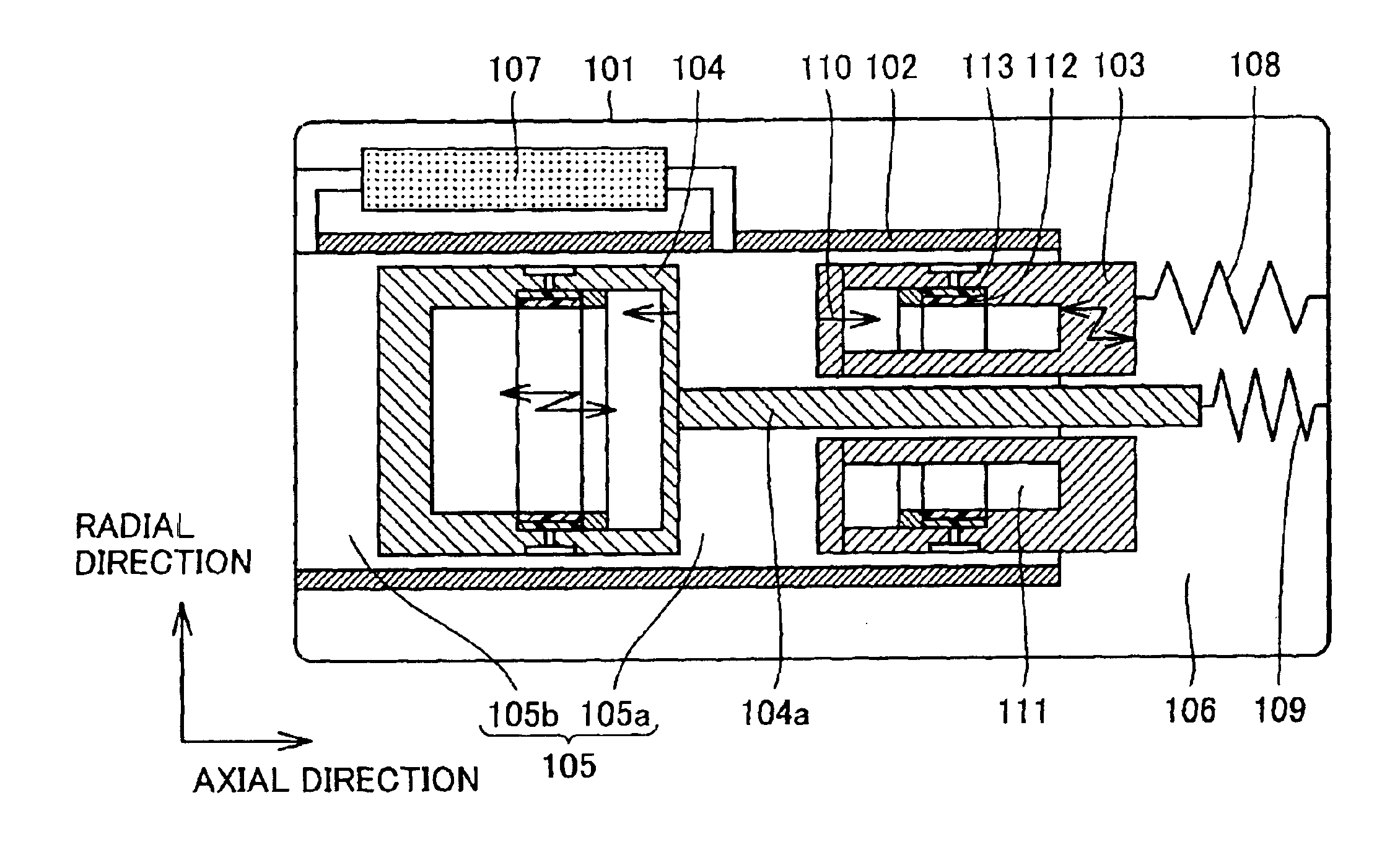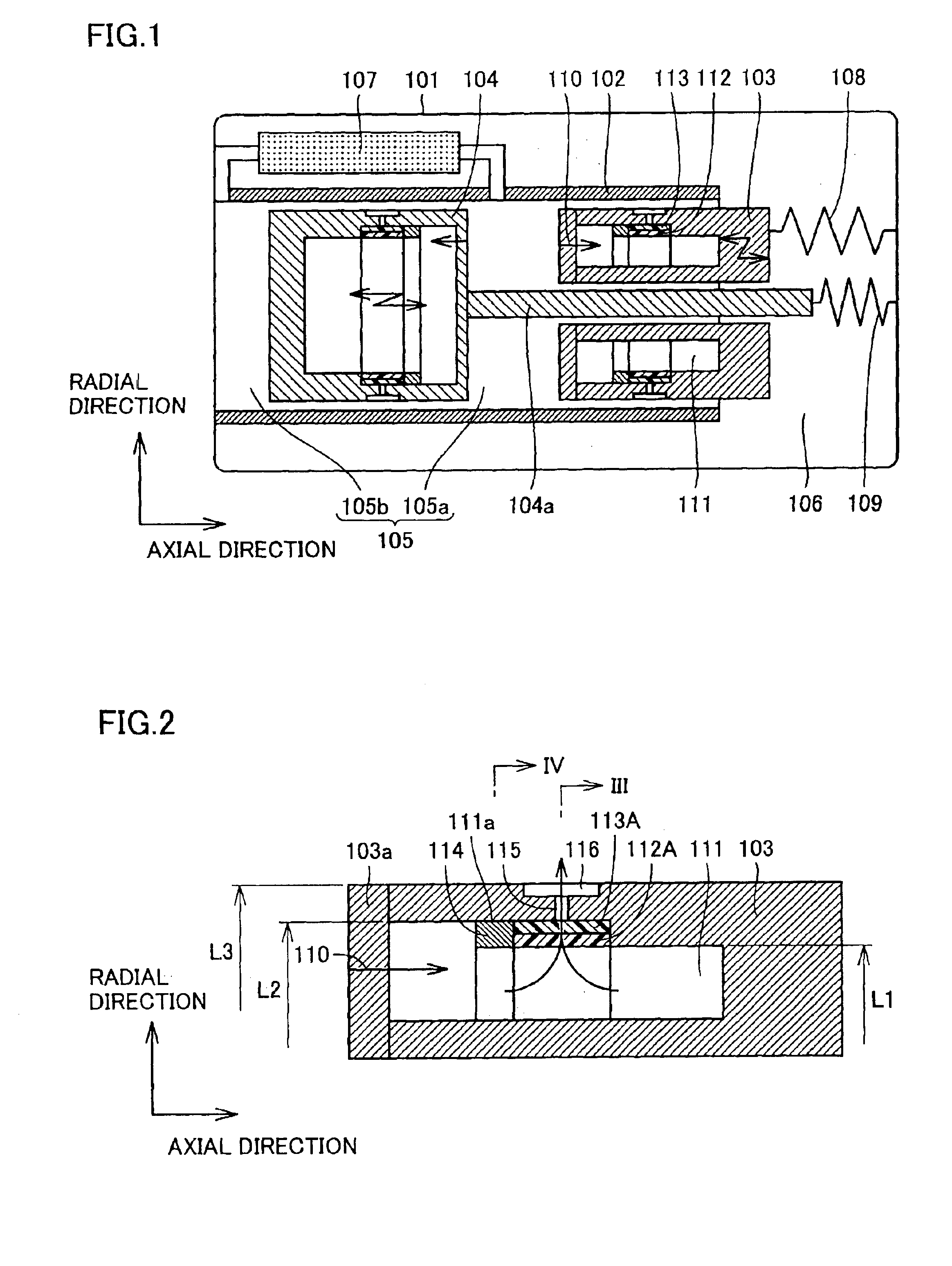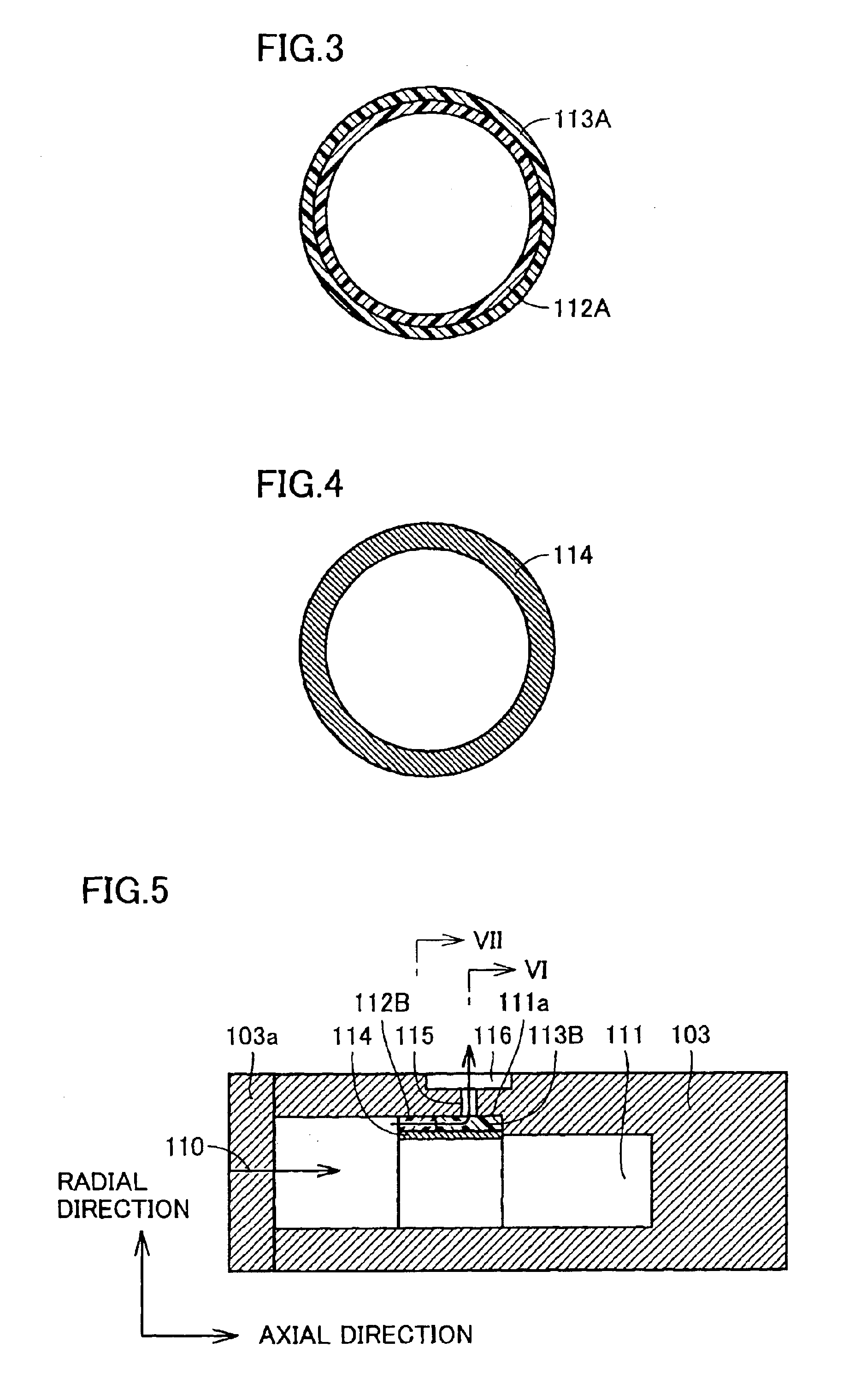Stirling engine, and stirling refrigerator
a technology of stirling refrigerator and stirling engine, which is applied in the field of stirling engines, can solve the problems of reducing the reliability of operation of stirling engines, reducing capability, and reducing miscellaneous losses, so as to reduce internal space, reduce manufacturing costs, and reduce internal space. the effect of capacity
- Summary
- Abstract
- Description
- Claims
- Application Information
AI Technical Summary
Benefits of technology
Problems solved by technology
Method used
Image
Examples
first embodiment
[0136](First Embodiment)
[0137]A Stirling engine according to a first embodiment based on the present invention is now described with reference to the drawings.
[0138](Schematic Structure of Stirling Engine)
[0139]The structure of a Stirling engine according to this embodiment is schematically described with reference to FIG. 1. In this embodiment, a pressure vessel 101 is filled up with high-pressure helium gas (hereinafter simply referred to as “gas”) as a medium. A piston 103 and a displacer 104 serving as effectors are arranged in a single cylinder 102, so that the piston 103 and the displacer 104 reciprocate respectively.
[0140]The piston 103 divides a space formed by the pressure vessel 102 and the cylinder 102 into two spaces. The first space is a working space 105 defined on a side of the piston 103 closer to the displacer 104. The second space is a back space 106 defined on a side of the piston 103 opposite to the displacer 104.
[0141]The displacer 104 further divides the workin...
second embodiment
[0166](Second Embodiment)
[0167]A Stirling engine according to a second embodiment based on the present invention is now described with reference to the drawings. As to structures identical to those in the first embodiment, detailed description is omitted. The feature of the Stirling engine according to this embodiment resides in the structure of a gas effusion part provided on a piston, and hence only the structure of this gas effusion part is mentioned here.
[0168]The structure of the gas effusion part in this embodiment is described with reference to FIGS. 5 to 7. FIG. 5 is a diagram showing the sectional form of a piston 103, FIG. 6 is a sectional view taken along the line VI in FIG. 5, and FIG. 7 is a sectional view taken along the line VII in FIG. 5.
[0169]Referring to FIG. 5, a first porous body 112B having large porosity and a second porous body 113B having small porosity are continuously arranged along the axial direction of a cylinder 102 to be arranged upstream a gas flow di...
third embodiment
[0178](Third Embodiment)
[0179]A Stirling engine according to a third embodiment based on the present invention is now described with reference to the drawings. As to structures identical to those in the first embodiment, detailed description is omitted. The feature of the Stirling engine according to this embodiment resides in the structure of a gas effusion part provided on a piston, and hence only the structure of this gas effusion part is mentioned here.
[0180]The structure of the gas effusion part in this embodiment is described with reference to FIGS. 8 and 9. FIG. 8 is a diagram showing the sectional form of a piston 103, and FIG. 9 is a sectional view taken along the line IX in FIG. 8.
[0181]Referring to FIG. 8, a vent hole 115 is provided perpendicularly (along the diametral direction of a cylinder 102) toward a pressurization chamber 111 in the piston 103, while a first porous body 112C is arranged upstream a gas flow direction and a second porous body 113C is inserted to be ...
PUM
 Login to View More
Login to View More Abstract
Description
Claims
Application Information
 Login to View More
Login to View More - R&D
- Intellectual Property
- Life Sciences
- Materials
- Tech Scout
- Unparalleled Data Quality
- Higher Quality Content
- 60% Fewer Hallucinations
Browse by: Latest US Patents, China's latest patents, Technical Efficacy Thesaurus, Application Domain, Technology Topic, Popular Technical Reports.
© 2025 PatSnap. All rights reserved.Legal|Privacy policy|Modern Slavery Act Transparency Statement|Sitemap|About US| Contact US: help@patsnap.com



